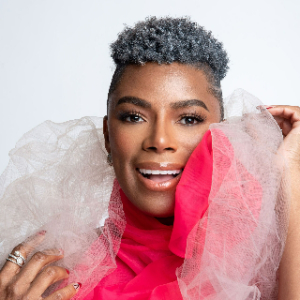THE ART OF COMMUNICATING WITH THE EMOTIONAL BRAIN IN MIND

I clearly remember the day my emotional brain got hijacked. It took over my entire body. My boss was congratulating a new colleague who just joined the team on a system that I designed and created. Inside I screamed – this isn’t right! I did it! I was so furious and felt so inadequate at the same time that I ended up not saying anything at all. I literally froze and did not say anything. Why? I got caught up in the SIMU – the story I was making up about what people will say or think. I didn’t want to get labelled as the angry black woman or the emotional woman. Later that night when I got home, I was furious not only at him but myself.
Sounds familiar?
Caught in between knowing what to say yet being at a loss for words, angry, sad or scared where you end up saying nothing?
At this month’s SisterTalk Goddess Circle (this is our monthly meet-up where we discuss and deconstruct key leadership skills for the bold, brave 21st Century leader who is ready to play bigger in life, at work & in love) we discussed the Art of Communication with the emotional brain in mind. We discussed how effective relationships are made or broken based on our ability to listen and connect with our emotional brain. We discussed the structure and the power of the emotional brain, and the choice we all have in the space between stimulus & response. (Not always easy to identify but it’s there).
Here’s the universal truth. Emotion is information.
Emotions function is to create instant chemical communication about our own experience to ourselves and to those around us, not to ACT but to inform us of our inner world.
It’s not easy to identify the space in between as most of us are victims of automaticity – where our automatic thought patterns drive us. In short, automaticity is:
“automatically letting emotions guide behaviour”
Great news if the result of that behaviour serves us and our higher purpose in life. If it doesn’t, this is where being a slave to your emotions and habits makes one a victim.
Some of the research shows that nonverbal communication has been shown to carry between 65% and 93% more impact than the actual words spoken, especially when the message involves emotional meaning and attitudes (hence the power of non-verbal cues). – Darlene Price, author of Well Said! Presentations and Conversations That Get Results.
Research also shows that non-verbal cues are sent primarily from the “emotional brain” rather than the CEO/Pre Frontal Cortex (thinking brain).
“nonverbal communication has been shown to carry between 65% and 93% more impact than the actual words spoken.” – Darlene Price
Emotions & The Brain – a closer look
There are 3 parts of the Emotional (limbic) brain:
- Amygdala: responds to input and filters incoming data for danger, scanning faces, and remembering emotionally arousing events, It can become overactive and can create unnecessary anxiety in our lives leading to unbeknownst feelings of concern or dread.
- Hippocampus: is responsible for short-term memories and integrating our short-term memory with perceptions, emotions, and factual recollections.
- Basal Ganglia: this is where we form habits – the negative or positive habits are stored here for use when needed.
According to Neuroscientist Shonte Jovan Taylor, “the emotional brain generates emotions on an unconsciousness level via signals from the bodily senses (sounds, sights, touch, etc.) and thoughts. Emotional signals are received by the both left and right brain. However, nonverbal cues (i.e. body language, posture, hand and foot movements, facial expressions) are received through the RIGHT SIDE of the brain. It is more connected to the information that we receive from the body and thus is the seat of our emotional and our social selves. The right brain develops faster than the left and is important in early childhood development when we rely on more nonverbal cues for communication (sound, touch, sight).”
Powerful isn’t it?
In addition to these non-verbal cues, what happens in the brain, when the stakes are high when we are emotionally triggered (which is every day) one of our automatic behaviours is making up stories. Stories are how we make sense of what we going through. After witnessing an event, the mind sends a reaction to the emotional brain which automatically creates a story of what just happened. Certain feelings, emotions, and body sensations may automatically arise based on the nature of this story.
”The most important thing in communication is hearing what isn’t said.” –Peter F. Drucker
The Power of The Space – Deconstructing Automaticity
According to the research, “When running on “autopilot”, behaviour and decision-making often follow habits and routines while the mind is preoccupied with other thoughts (e.g., Langer & Abelson, 1974). Automatic thinking patterns can negatively influence well-being. For instance, when unconscious and automatic reaction follows an external event, it can become difficult to separate the objective event from the subjective thoughts or emotions that it creates.
Increasing our awareness around our automatic response is where our true power lies. Turning this into behaviour or response that serves your end result is key to communicating effectively with the emotional brain in mind.
Bringing it all Together
A key function of your brain is social connection. This is how you make sense of yourself and the greater world around you. You are wired for connection – so interacting, speaking & your need for creating meaningful relationships is innate. This means – that you will be triggered daily, at work, at home, on the subway, in traffic and the list goes on. If you are living and breathing – then you will be emotionally triggered.
Remember that your brain is highly stimulated by non-verbal cues such as facial expression, tone of voice, body language, gestures and as noted before – our non-verbal cues have a greater impact than our verbal. So gaining an understanding of your own non-verbal cues is key, as this gives you greater insight into others.
Interrupting your automatic thoughts, disrupting the thoughts that no longer serve you & choosing a conscious thought is possible but there is an art to it.
The art of communicating with the Emotional Brain in Mind is to B.E.E.P before you speak. Here is a simple yet easy-to-remember technique, I’ve put together to help you master the art of communicating. Remember to B.E.E.P before you speak!
- B: Bodily sensation – check in – what is your body trying to tell? What sensations do you feel?
- E: Expand it -allow that feeling to travel – to get big – to be. Breathe into it.
- E: Express it – name it. Where are you feeling this sensation (in your chest, stomach, neck, throat) and What are you feeling? (mad, sad, scared) Naming the emotion lowers your stress and activates the CEO/Pre Frontal Cortex – the thinking part of the brain.
- P: Pause, choose the story that serves your desired outcome.
Beeping before you speak will help you pause and consciously choose – to use the space in between stimulus and behaviour – most importantly giving you an opportunity to choose a story that serves you and your desired outcome. The story we tell ourselves about our place in society, the status we hold, how others see us and most importantly how we see ourselves drives all have an impact on how we show up & how we interpret that information in our brain.
Understanding your brain will increase your personal effectiveness at work, at home and in life. How we understand/see our emotions has a direct impact on every single interaction in our daily lives. Emotional Intelligence is a skill that can be developed – it’s about using your emotions in the most effective way, confidently expressing yourself, making decisions that serve you and having the courage to ask for what you need in spite of the fear.
You can leverage the power of your emotional brain to align your verbal & non-verbal cues to create the life you want. When we use both our brain & our heart, we are able to integrate our experiences, make better sense of the world and get deeper access to creativity.
Don’t let fear rule your communication skills. Learn how to B.E.E.P before you speak and you will never miss an important conversation again.
Tell me, what are your greatest challenges when you think of the B.E.E.P Technique and did you apply it? What was your experience? I would love to hear from you! If there is anything else that I can do to help you master your brain & your emotions, do not hesitate to ask. I am here to help.
Cultural Explorer Membership
Step into your power and dream bigger into your purpose with the Cultural Explorer Membership—a transformative learning path and self-designed roap map designed for cultural learners and self-leaders ready to connect with their highest self, elevate their leadership impact, and bring their dreams to life.
This is your invitation to dream big, lead with purpose and build the future you deserve.
Are you ready? Join a community of powerful women boldly stepping into their greatness.
 Become a member start your journey of purpose and transformation!
Become a member start your journey of purpose and transformation!
Want to Contribute to our Work and Fundraising Goals for #1000BlackWomenBest initiatives?

